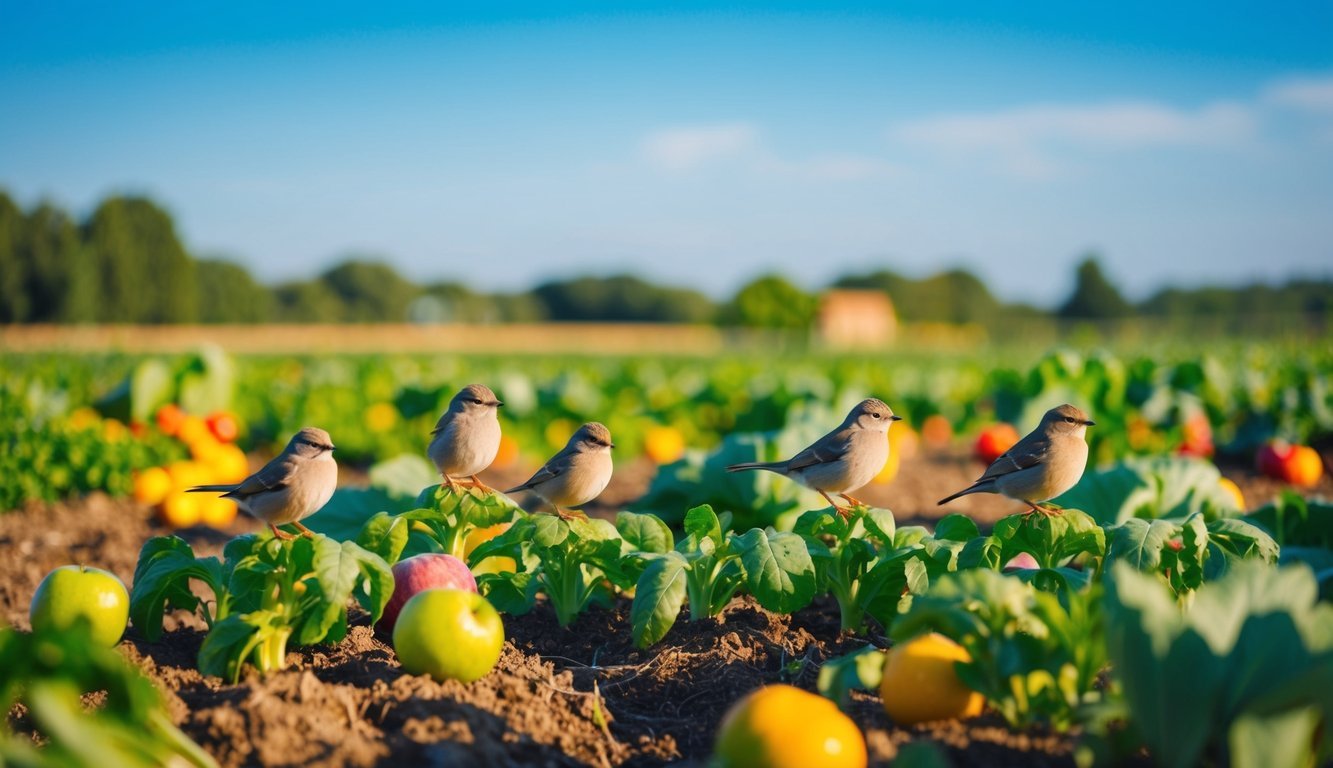
According to fresh findings, the droppings of small birds present an insignificant risk to food safety on agricultural lands.
Understanding Bird Sizes and Pathogens
Farmers can assess the potential dangers posed by bird droppings to their crops without needing advanced tools, scientific expertise, or lab tests.
A recent study from the University of California, Davis, published in the Journal of Applied Ecology, demonstrates that merely observing the size of bird feces offers insights into food safety concerns.
This research sheds light on how farmers can mitigate crop loss while balancing their responsibilities towards biodiversity, land management, and productivity.
In the aftermath of the 2006 E. coli outbreak that significantly shook the U.S. leafy greens industry, farmers have faced rising pressures to eliminate natural habitats to reduce wildlife interactions and the pathogens they may introduce.
Concerns about food safety have led many farmers to abandon crops growing within three feet of any animal feces, fearing audits and repercussions from buyers.
Such guidelines often impede conservation efforts that farmers wish to pursue.
Research Findings and Implications
The study’s lead investigator aimed to clarify the actual food safety risks posed by wild birds.
His research sought to identify which species harbor pathogens, determine which birds frequent farms, and assess how long pathogens can survive in bird droppings.
The findings suggest that it’s possible to achieve a balanced management strategy that meets both agricultural needs and conservation goals.
To dive deeper into these questions, researchers undertook comprehensive field studies that included bird surveys and fecal analyses.
They assessed nearly 10,000 birds across 29 lettuce farms located in California’s Central Coast.
By observing various species, including turkeys and bluebirds, they collected a wealth of droppings to examine the duration that E. coli can survive on lettuce, soil, and plastic surfaces.
The study’s results were straightforward: fecal matter from smaller birds is unlikely to carry harmful pathogens, which are typically rare among birds.
The bird’s size played a crucial role in pathogen survival.
Larger birds leave larger droppings where pathogens tend to survive longer; in contrast, the feces from smaller birds degrade more quickly.
Conservation and Food Safety Balance
Moreover, the type of surface also influenced how long pathogens lingered.
The study found that E. coli survived for more extended periods on lettuce leaves compared to soil or plastic mulch.
Encouragingly, about 90% of the birds observed were small species that mostly defecated on soil, thereby posing minimal health risks.
This research confirms that the presence of birds translates to minimal food safety threats.
The study’s lead author noted that wild birds, especially those living in agricultural areas, seldom carry pathogenic E. coli or Salmonella.
Additionally, E. coli typically breaks down quickly in most bird droppings.
These insights open the door for new practices that allow farmers to balance food safety considerations with conservation goals.
For example, setting up nest boxes could attract small, insect-eating birds like bluebirds and swallows, which can assist in pest control without increasing food safety risks.
Furthermore, this study adds to the growing evidence suggesting that removing habitats isn’t necessary to improve food safety on farms.
Maintaining natural spaces around agricultural fields can actually support populations of smaller insectivorous birds, which are not major carriers of pathogens.
The findings bolster the idea that farmers can maintain healthy ecosystems and promote diverse bird species while ensuring food safety remains intact.
Source: ScienceDaily

